Volume 9, Issue 2
Displaying 1-11 of 11 articles from this issue
- |<
- <
- 1
- >
- >|
-
2018Volume 9Issue 2 Pages 71-91
Published: December 01, 2018
Released on J-STAGE: January 18, 2022
Download PDF (40543K)
-
2018Volume 9Issue 2 Pages 92-98
Published: December 01, 2018
Released on J-STAGE: January 18, 2022
Download PDF (1045K) -
2018Volume 9Issue 2 Pages 99-104
Published: December 01, 2018
Released on J-STAGE: January 18, 2022
Download PDF (1376K)
-
2018Volume 9Issue 2 Pages 105-110
Published: December 01, 2018
Released on J-STAGE: January 18, 2022
Download PDF (939K) -
2018Volume 9Issue 2 Pages 111-115
Published: December 01, 2018
Released on J-STAGE: January 18, 2022
Download PDF (1154K) -
2018Volume 9Issue 2 Pages 116-120
Published: December 01, 2018
Released on J-STAGE: January 18, 2022
Download PDF (1226K)
-
2018Volume 9Issue 2 Pages 121-124
Published: December 01, 2018
Released on J-STAGE: January 18, 2022
Download PDF (1962K) -
2018Volume 9Issue 2 Pages 125-128
Published: December 01, 2018
Released on J-STAGE: January 18, 2022
Download PDF (991K) -
2018Volume 9Issue 2 Pages 129-132
Published: December 01, 2018
Released on J-STAGE: January 18, 2022
Download PDF (874K)
-
2018Volume 9Issue 2 Pages 133-137
Published: December 01, 2018
Released on J-STAGE: January 18, 2022
Download PDF (1868K)
-
2018Volume 9Issue 2 Pages 138-142
Published: December 01, 2018
Released on J-STAGE: January 18, 2022
Download PDF (4598K)
- |<
- <
- 1
- >
- >|
